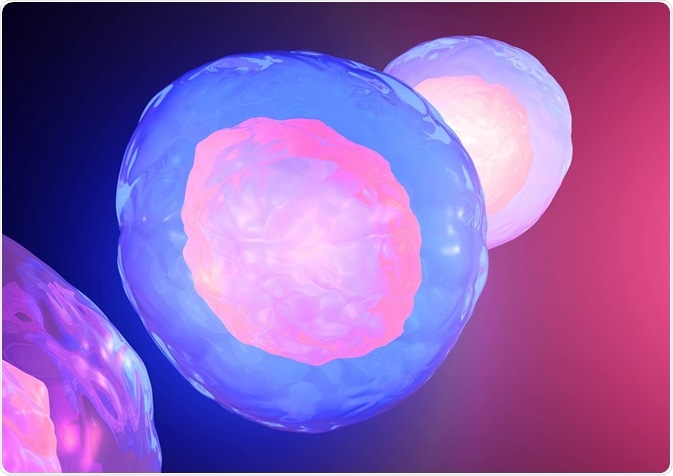It is possible to profile the DNA-binding proteins, histone modifications, and nucleosomes of a whole genome using chromatin immunoprecipitation followed by sequencing, or ChIP-seq. Preparation of a ChIP-seq library allows for the study of gene regulation and epigenetic mechanisms.
 Alexander Mozymov | Shutterstock
Alexander Mozymov | Shutterstock
Successful library preparation
Standard DNA library preparation is not dissimilar to ChIP-seq library preparation. Several commercial methods exist, often suited for the next generation sequencing platform called Illumina sequencing, which can also be used in standard DNA library preparation. Other next generation sequencing platforms include Helicos, Roche, and ABI. One difference between standard and ChIP-seq library preparation is the amount of input DNA, which is commonly lower for ChIP-seq libraries.
All ChIP experiments focus on proteins which bind DNA, so begin by crosslinking the DNA-binding proteins to DNA. This is typically done using formaldehyde, followed by sonication-induced shearing. This yields small fragments in the range of 200 to 600 bp. An antibody raised against the targeted protein is used to immunoprecipitate the complex of DNA and protein. The crosslinks are then reversed, and the fragmented free DNA is used in library preparation.
Library preparation for Illumina often follow the same general outline. The input, consisting of the fragmented DNA, undergoes treatment to repair the ends and phosphorylate the 5-prime end. Following this, the chosen adaptor is ligated and the uracil part of this adaptor is excised. PCR is used for enrichment and strand duplication, the products are cleaned up and the library is constructed.
Recommendations for library preparation
In order to construct libraries that have good coverage and low bias, both high quality DNA and proper library preparation are necessary. During preparation, sample recovery can be maximized by using low retention tubes which minimize the binding of DNA to laboratory plastic ware.
All reagents should be freshly prepared on the day the library is prepared. Similarly, the enzymes used in library preparation tend to have high degradation rates at room temperature, which means they need to be consistently stored at suitable temperatures to ensure reaction efficiency.
Library preparation must be preceded by DNA quantification. It is recommended that this quantification is done using a fluorometer because techniques that use intercalating dyes for the quantification of DNA have higher accuracy and improved sensitivity compared to spectrometers. Library preparation should be both preceded and followed by verification of the sample size distribution, using bioanalyzer machines.
It is important to use a DNA kit of high sensitivity to guarantee that DNA quantification and qualification is accurate. The adaptors used in library preparation will add weight to the sample and should be taken into account during size selection.
Prior to sequencing, the libraries in preparation should be cleaned and size selected to remove undesired DNA fragments, for example primers that have not ligated or primer dimers. The DNA clean up should also eliminate any fragments of DNA that are below 200 bp in length.
Prior to the synthesis of the library, it is advised that the immunoprecipitated DNA be analyzed. This is done using qPCR with a minimum of one positive and negative control target for a specific gene chosen as per requirement.
ChIP-seq requires a control to compare peaks from sequence analysis, and therefore controls must be prepared alongside the library. While no control is universally agreed upon as the optimal one, the most common ones in use one of the following:
- Input DNA, or DNA that has not been immunoprecipitated
- Mock DNA, or DNA that is not treated with an antibody during immunoprecipitation
- Non-specific, or an antibody which is known to not interact with DNA
As ChIP-seq uses antibodies, experiments can be restricted by antibody use. The best library will be constructed using a validated antibody, as some antibodies are not compatible with next generation sequencing platforms.
Further Reading